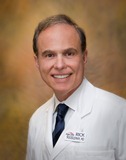Our Event Chairs
Marie LoPresto and Anita Del Grande
Honorary Chair Shellie Fry
Message From Nancy Brown
Dear Friends,
Welcome to the Silicon Valley Go Red For Women Luncheon!We’re delighted you are here and appreciate your interest in learning how you can advance health, stop heart disease and save women’s lives. That’s what the American Heart Association’s Go Red For Women® movement is all about.
Heart disease isn’t just a man’s problem. It’s a woman’s problem, too. In fact, it’s the No. 1 killer of women. And, tragically, far too few women realize their risk from this preventable disease. We need to raise women’s awareness of their risk and protect our mothers, daughters, sisters, friends and ourselves.
You can help, starting today. Here’s how:
First, take charge of your own heart health. Visit your doctor. Know your numbers (learn more at www.GoRedForWomen.org). You can improve your blood pressure, cholesterol and other numbers by making lifestyle changes. You’ll be healthier and look and feel better, too.
Second, join the American Heart Association in making it your mission to fight heart disease in women. Help spread the word that heart disease is women’s No. 1 killer. Share what you learn today with your family and members of your community. Tell five women you want them to live and we can help stop heart disease in our lifetime.
Third and last, consider making a contribution. Your donation today will make a difference in the lives of women here and across the country. You can help fund local and national Go Red activities that support awareness, research, education and community programs that benefit women.
Thank you again for being here. My hope is that you won’t leave today without committing to making a difference by joining the Go Red For Women movement — women everywhere need your help. Only one in five women believes that heart disease is her greatest health threat. We believe reducing risk and preventing heart disease starts with education — and you. There’s so much to do, and so much at stake.
With your commitment, we can help women and their families live longer, stronger lives. Thank you for your generous support.
Warm regards,
Nancy Brown
Chief Executive Officer
American Heart Association
Volunteer Spotlight

I am a dermatologist practicing in Silicon Valley, California. I have always considered myself to be in good health. However, on June 23rd, 2009, I had a personal experience with heart disease and stroke that changed my life. That morning, as part of my daily routine, I walked to the nearby gym to exercise. While riding on the elliptical bicycle, I experienced the sudden onset of right-sided numbness and weakness of my hand and face. My speech was slightly slurred and the right side of my face had a subtle, but distinct droop. Initially, I was in denial about the seriousness of my symptoms, as are many people, including physicians. I convinced myself that these symptoms were not consequential and would quickly resolve. I walked home from the gym and told my wife, who is also a physician, that something was wrong. She immediately recognized that I might be having a stroke. I was diagnosed with a “patent foramen ovale” (foh-RAY-mun oh-VAY-lee). A PFO is a hole in the heart that didn't close the way it should after birth. During fetal development, this small flap-like opening is usually present between the right and left upper chambers of the heart. It normally closes during infancy. When the foramen ovale doesn't close, it's called a patent foramen ovale. Although it's common to have a patent foramen ovale, most people with the condition never know they have it. In my case, a small blood clot in my heart moved through my PVO and traveled to my brain, causing a stroke. Thankfully, I underwent a procedure to close this opening in my heart and was discharged from the hospital and back to work within a week. I was very lucky: while I was initially in denial, my wife recognized the warning signs of a stroke and got me to the hospital right away. I have made a complete recovery and lead a normal life without any restrictions on my activities. I see my cardiologist regularly; take baby aspirin, and am no longer on prescription blood thinning medications.
In my dermatology practice, I see many patients with risk factors for heart disease and stroke. I share my story with them and make them aware that stroke is the No. 4 cause of death. I teach them about F.A.S.T., an easy way to remember the sudden signs and symptoms of a stroke: Facial drooping; Arm weakness, Speech difficulty, Time to call 911. I want them to learn from my mistakes and to immediately call 911 should they experience any warning signs of stroke. I am sharing my story through the American Heart Association because I want it to be a powerful lesson to others: if a doctor missed warning signs of stroke, anyone can.
Rick Noodleman, MD
Medical Director, Age Defy Dermatology and Wellness™